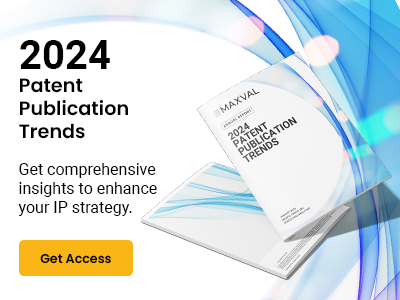Intro
Wouldn’t your job be easier if you had an assistant? Someone always ready to help, who could tackle certain tasks for you, and who could offer advice about what to do next? Artificial Intelligence (AI) agents are poised to become that solution, and they will be one of the hottest technology trends in 2025. Think of them as virtual employees who interact with users and systems to offer support, answer questions, and complete tasks.
What Is an AI Agent?
“Think of agents as the new apps for an AI-powered world,” says Jared Spataro, Microsoft’s chief marketing officer for AI at Work. Agents in AI are software programs that use the power of generative AI to autonomously perform tasks or make decisions on behalf of users. AI agents can gather information, analyze data, and provide real-time responses to achieve specific goals. They can perform tasks from answering simple questions to resolving complex issues. For example, one could create an agent to know everything about a company’s product catalog so it can reply to customer questions or automatically compile product details. One of the things that separates AI agents from other tools is their autonomy. While the user sets goals, the AI agent independently chooses the best actions it needs to perform in order to achieve those goals.
How Do AI Agents Work?
AI agents range from simple task-specific programs to sophisticated systems and may operate in different environments to accomplish their tasks. However, all functional agents share the following architectural breakdown.
Perception and Data Collection: AI agents start by gathering and processing from their environment. This may include reading text commands, analyzing data streams, or receiving sensor data. This data is converted into a format the agent can process. Advanced AI agents can process data in real time, providing them with the most up-to-date information to handle tasks effectively.
Decision Making: Using sophisticated machine learning models like natural language processing, AI agents analyze the collected data to identify patterns and make decisions. They generate possible actions, assess potential outcomes, and select the most appropriate response based on their programming and current context. For example, they can determine the most appropriate response to a customer query based on past interactions and the current context.
Action Execution: Once a decision is made, AI agents execute the required action through their output interfaces. This could involve answering a customer query, generating text responses, processing a request, or escalating to a human agent. The execution is designed to be seamless.
Learning and Adaptation: AI agents can improve their performance over time by continuously learning from each interaction, and refining their algorithms to improve accuracy and effectiveness. This continuous learning capability ensures that AI agents remain effective and keep up with customer expectations and business environments.
Types of AI Agents
While AI agents share similar architectures, not all AI agents are the same. There are many AI agent options, ranging from simple task-specific automation tools to sophisticated multi-purpose assistants that can transform business workflows. Some examples are listed below.
Simple Reflex Agents
Simple reflex agents function strictly based on predefined rules and their immediate data. They are based on a condition-action rule where the condition or the state is mapped to the action such that action is taken only when the condition is true or else it will not respond to situations beyond a given event condition action rule. Hence, these agents are suitable for simple tasks that don’t require extensive training. For example, you can use a simple reflex agent to shut down machinery when detecting an obstacle in a work area.
Model-Based Agents
These agents have an internal model of the world around them and a more advanced decision-making mechanism that can see things that aren’t immediately obvious. This model tracks how the environment evolves, allowing the agent to “fill the gaps” in missing information and make autonomous decisions. This makes them far more complex and agile than simple reflex agents. One example can be an agent monitoring manufacturing processes by maintaining a model of normal operations to detect anomalies.
Utility-Based Agents
A utility-based agent uses a complex reasoning algorithm to make decisions. They can evaluate different scenarios based on an expected utility measure to choose an optimal approach that provides users with the best outcome. This model is best suited when there are multiple solutions to a problem, and the agent needs to decide on the best one, such as searching for flight tickets with minimum traveling time.
Goal-Based Agents
Goal-based agents are tailored to achieve specific goals. They consider the consequences of their actions and can make decisions based on whether they can use the action to achieve its objective. Unlike reflex agents that act based on rules or world models, goal-based agents plan sequences of actions to achieve desired outcomes. An example is a chess-playing AI whose goal is winning the game
Learning Agents
These agents have the capability to learn from past experiences and take actions or make decisions based on various learning mechanisms to optimize their performance. They are best suited for environments where the most favorable behavior isn’t yet known and must be learned through experience. One example might be an energy management system in an office that learns heating and cooling patterns over time.
Hierarchical Agents
Hierarchical agents are an organized group of intelligent agents arranged in tiers. The higher-level AI agents manage and direct the lower-level agents to work toward a common goal independently or cooperatively. This structure allows users to break down complex multi-step processes into simpler tasks, allowing each AI agent to focus on one set of responsibilities. An example could be robotic task planning, by breaking down simple robotic tasks into basic movements and actions.
Benefits and Challenges of AI Agents
There are numerous benefits to implementing AI agents in your business. AI agents can enhance your efficiency by freeing you from the drudgery of repetitive tasks allowing you to focus your attention on mission-critical or creative activities, adding more value to your organization. AI agents are available around the clock, regardless of time zones or business hours. This continuous availability helps businesses be more productive. They are also scalable to handle increased volumes or complexity of tasks, making them ideal for growing businesses that don’t want to compromise quality. AI agents can reduce unnecessary costs arising from inefficiencies, human errors, and manual processes.
Despite their many advantages, AI agents can also pose challenges and ethical dilemmas. The first that comes to mind in any AI scenario is job security. Might AI agents become so sophisticated that they could lead to job displacement. They have access to a significant amount of data raising concerns of data security. Speaking of security, malicious actors could employ AI agents to perform cyberattacks. Applying safeguards, such as human reviews, is needed to minimize these challenges.
Conclusions
The adoption of AI agents represents a paradigm shift in terms of how work gets done. AI agents are already offering solutions to complex problems and making our lives more convenient. As machine learning, large language models (LLMs), and natural language processing (NLP) tools develop (and let’s not forget about quantum computing), AI agents will continue to evolve, with faster decision-making, increased productivity, and more time for users to focus on high-value activities. While there are challenges, the potential benefits are great. Moving forward, the key will be balancing innovation with ethical considerations to ensure AI agents contribute positively to society.




